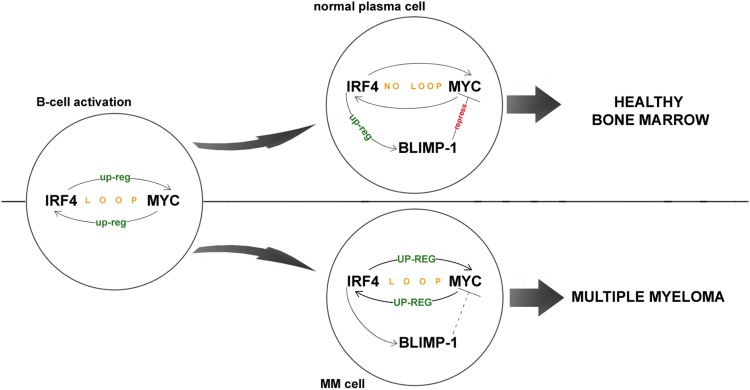Fig. 1.
Role of IRF4 expression in myeloma cells. IRF4 and MYC form an auto-regulatory loop, with the former up-regulating the latter and vice versa. This loop is required during the B-cell activation, but is later abrogated in mature plasma cells through expression of BLIMP-1, which represses MYC. In myeloma cells, this mechanism of repression is somehow inactivated, causing the IRF4-MYC loop to spiral of control, facilitating tumor growth. Increased levels of IRF4 (as in people with rs872071G allele) could impede the IRF4-MYC loop, thus slowing down the progression of the disease. On the other hand though, increased levels of IRF4 would result in lower levels of BLIMP-1, which could help establish the IRF4-MYC loop during plasma cell formation, thus helping in tumorigenesis

